Social and economic development. Рубрика в журнале - Arctic and North
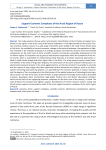
Support Economic Complexes of the Arctic Region of Russia
Статья научная
The study examines the key vectors of economic intensification of the formation of support complexes for the regions of the Arctic zone of the Russian Federation. In the high latitudes of the country, Russian scientists conduct research in a wide range of scientific areas related to the study of the climatic state of the Arctic, the availability of natural resources, changes in the natural landscape, the application of high-tech methods in the industrial production of strategic products and materials. Climatic and environmental components are the main focus of Arctic scientific research, ensuring the sustainable development of the Far North regions. An important role is given to international cooperation within the framework of the Arctic Council, which is responsible for implementing timely decisions to promote situational approaches related to rapid climate change and other urgent tasks in the Arctic. The study presents newly created industrial facilities in the areas of large open deposits, the construction of new ports and port infrastructure, implemented investment projects in the Arctic agglomerations, on the basis of which it is possible to conclude that the system of state support has been optimized and that businesses are ready to assist in the development of existing and promising projects. It is specified that the economic potential of natural resources and the degree of their use depend on the effectiveness of the applied measures of technological and regulatory nature. The role of the cities of the Far North as large industrial and energy centers with a diversified economy, developed urban environment, high-quality medical care and decent educational activities, which are the basis of the supporting economic complexes of the Arctic zone of the country, is noted. The main directions for transport and logistics support, development of mineral resource centers, energy and infrastructure support are presented in order to form the support economic complexes of the Arctic region of Russia.
Бесплатно
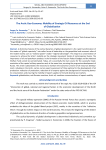
The Arctic Geo-Economy: Mobility of Strategic Oil Resources at the End of Globalization
Статья научная
A distinctive feature of the cyclical dynamics of global development is the rapid transformation of the maxim of “global superiority” into softer forms of leadership on the geopolitical and economic atlas of the modern world, such as “national power” and/or “regional advantage”. This requires a concentration of resources to achieve the latter's mobility on the strategic movement trends of contemporary Russia. The importance of oil and petroleum products in the formation of the Russian Federal Budget and the National Welfare Fund cannot be overestimated. Today, oil is essentially the main source for the successful implementation of the special military operation and, at the same time, ensuring the progressive development of Russia. The article substantiates the necessity to maintain the economic turnover of oil resources development, including in the Arctic, carries out an expert assessment of three options for the development of oil production: reduction of production; reduction of oil exports against the background of increasing domestic consumption; and ensuring the mobility of export supplies to find and develop new markets.
Бесплатно
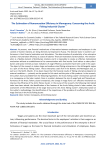
Статья научная
At present, new financial mechanisms of interaction between employees and employers in the context of market relations are being formed and improved in Russia. The decisive factor in workers’ performance is their financial motivation and stimulation. The determinative of productivity of an enterprise activity is remuneration efficiency as a base of laborers’ financial motivation and stimulation. The remuneration is a flexible element of distributive relations and it is impossible to create an effective motivational mechanism without an establishment of its communication with final results. Such indices as salary distribution and salary intensity as basic indicators of wage efficiency assessment have been used in the paper. The object of the research is sixteen large and medium-sized fishing enterprises in the Arkhangelsk region as a part of the Arctic fishing cluster. These enterprises catch fish in the Barents and Norwegian seas, as well as in the North Atlantic. It has been shown that the financial results of fishing enterprises depend on external conditions — primarily on the quotas for fish catch and the price of fish products. In the research, the authors have proceeded from the following hypotheses: the Arctic fishing cluster’s enterprises operate in a monopsony on the labor market; there is a pattern between the size of wage fund and financial performance of the Arctic fishery cluster enterprises; the change in wage fund is an effective mechanism to improve the efficiency of the Arctic fishery cluster. In the course of the research, the following interrelated tasks have been solved: the identification of the features of the Arctic fishing cluster’s labor market; the assessment of the effectiveness of the wage fund use for the Arctic fishing cluster’s enterprises based on the author's methodology; the identification of the importance of the problem of insufficient efficiency of wage fund use in the Arctic fishing cluster.
Бесплатно
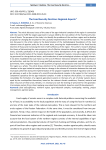
The Food Security Doctrine: Regional Aspects
Статья научная
The article discusses issues of the state of the agro-industrial complex of the region in connection with the need to fulfill the targets approved in January 2020 by the new edition of the Food Security Doctrine of Russia. The purpose of the study is to identify the problems of the northern region and to develop proposals for changing the situation for the successful implementation of the Doctrine. The scientific problem discussed in the article relates to the determination of the methodological foundations of the most relevant areas of agrarian policy for the current state, ensuring the implementation of the Food Security Doctrine of Russia and increasing the level of self-sufficiency of the region. The author's research develops the theory of determining the socio-economic role of effective interaction between authorities of different levels, scientific justification of the prospects for the further development of the agro-industrial complex due to the transformation of the industry development management system, innovative approach to training personnel for the agricultural sector, and introduction of new technological solutions as highly relevant. It has been established that such factors as the lack of effective interaction between the state and municipal authorities, and also the lack of young qualified personnel, whose competence meets the modern requirements, have a negative impact on the economy of agricultural production and food self-sufficiency of the region as a whole. The article draws attention to the underestimated opportunities for improving the situation in the agro-industrial complex due to a change in the scheme of interaction between the state and municipal authorities during the implementation of the program-targeted method of regulation and strategic planning, as well as the creation of a scientific and educational complex in the region for the training of competitive specialists for the agro-industrial complex. In order to improve the situation, it is necessary to consolidate the formation of a regional agricultural system on the basis of a set of similar systems developed by the municipalities themselves, based on the relevant climatic conditions, financial, material and labor resources of these areas. Besides, it is necessary to start the training of personnel for the agroindustrial complex system from school, applying new educational standards, based on scientific developments.
Бесплатно
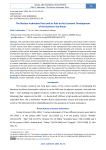
The Nuclear Icebreaker Fleet and Its Role in the Economic Development of the Northern Sea Route
Статья научная
This scientific article studies the development of nuclear icebreakers, the history of their commissioning and service; the growth of nuclear icebreaker capacity is investigated. The Soviet and Russian stages of their history have been compared. A diagram of this development was constructed. Key tactical and technical data of nuclear icebreakers are compared; their proportionality and similarity are proved. The prospects of the nuclear icebreaker fleet development are investigated. The growth of cargo turnover along the Northern Sea Route in 1933–2022 is analyzed and systematized. The development of nuclear icebreakers is compared with the growth of cargo turnover along the Northern Sea Route, their interdependence is proved; the diagram of this interdependence is constructed. The reasons for the influence of both the development of the human economy and political events in and around Russia on the changes in the grouping of nuclear icebreakers are revealed. It is identified that the volumes of transportations along the Northern Sea Route in the 21st century are many times higher than in the Soviet era, largely due to the growth of the quality and quantity of the nuclear icebreaker fleet. The reasons for the reduction of the nuclear icebreaker fleet at the beginning of the 21st century under the influence of the general temporary reduction of cargo flows along the Northern Sea Route are shown. Maximum small and optimal sizes of nuclear icebreakers grouping for effective operation of the Northern Sea Route are specified.
Бесплатно
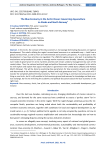
The blue economy in the Arctic Ocean: governing aquaculture in Alaska and North Norway
Статья научная
In the Arctic, the concept of the blue economy is increasingly dominating discussions on regional development. This entails utilising the region’s ocean-based resources in a sustainable way - both from a global and local level, as well as from an environmental and economic perspective. A crucial aspect in this development is how blue activities are regulated. The UNCLOS-regime plays a vital part in providing the mechanisms and procedures for states to manage marine resources more broadly. However, the predominant mode of governance for Arctic maritime activities will remain unilateral management by each of the coastal states. Thus, the national and local legal and political framework needs to be mapped. In this article we will explore and explain how aqua/-mariculture is governed in the United States (Alaska) and Norway (North Norway). This will be done by examining how parameters for blue economic projects are defined and determined at the international, regional, national and local governance level. Thus, our article will illustrate the complexity behind the blue economy. There is no such thing as one blue economy and no such thing as one Arctic, but it is still possible to find common ground and avenues for knowledge and best practice exchange. By this we will bring the academic and political discussions about the blue economy on the right track.
Бесплатно
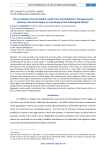
Статья научная
The article considers the relationship of social capital, institutional and interpersonal trust, and entrepreneurial activity on the data of the Arkhangelsk Oblast. The authors, following R. Putnam, analytically distinguish two types of social capital - bonding and bridging. The level of the former is measured by interpersonal trust indices, while the latter is measured by general and institutional trust indices. Based on the analysis of the sociological survey results, conducted by the authors of the article, it is shown that the level of bonding capital, based on trust in the nearest social environment, is quite high in the Arkhangelsk Oblast, but there is a shortage of bridging capital that based on trust in public institutions and civil solidarity. It is shown that the deficit of bridging social capital, associated with a low level of trust in institutions, increases the transaction costs of market agents like entrepreneurs, which negatively affects the implementation of the region's entrepreneurial potential. Thus, it is proved that the amount of social capital is a key non-economic factor that reduces the investment rating and entrepreneurial activity indicators in the region against the backdrop of low dynamics of gross regional product and population incomes and increasing government spending to stimulate small and medium-sized businesses.
Бесплатно
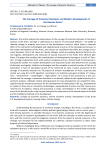
The courage of economic decisions and the modern development of the Russian Arctic
Статья научная
The article analyzes the phenomenon of the courage of economic decisions in the development of the Russian Arctic. Courage is understood as a feature of contractual behavior - the ability to radically change or propose new conditions for an economic contract, which leads to dramatic shifts in the territorial, technological and organizational structure of the development process. In the modern development of the Arctic, new factors that affect the boldness of economic decisions are considered. First of all, it is climate change that pushes the boundaries of what is possible for maritime logistics, for the arrangement and extraction of the Arctic’s natural resources from offshore platforms. The manifestations of courage as a result of “infection” from small venture companies for large corporations and as a forced result of a contractual inter-corporate conflict are also considered. For modern development, important factors that determine the boldness of decisions are logistics, platform technology, and the complete or partial abandonment of the use of icebreakers in favor of specialized ice-strengthened ships. An estimation was made of the courage of business decisions for 24 projects of modern exploration of the Arctic resources using the U-ETO algorithm: according to 12 indicators grouped in blocks of “uniqueness”, “environment”, “technology”, and “organization”. As a result of this assessment, it was concluded that the courage of economic decisions is not directly related to the capital intensity of investment projects: relatively modest mining projects of new development can exceed super-capital intensive investment megaprojects for the development of hydrocarbons (e.g., Bovanenkovo or Vankor) if they rely on innovative technologies, organizational scheme and marine environment for its logistics, production, and processing. A major contradiction in the modern development of the Russian Arctic is the contrast between the uniqueness of the natural assets of the field and the traditional methods of its arrangement and development.
Бесплатно
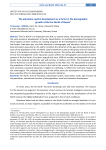
The education system development as a factor in the demographic growth of the Far North of Russia
Статья научная
The Far North is an important area that, to a great extent, determines the prospects for the socioeconomic development of Russia. Nevertheless, no particular synthetic development program for these territories has been worked out. Existing programs for the development of the Arctic zone of the Russian Federation pay very little attention to demography and education. Based on Rosstat data and expert assessments, the author considers the dynamics of the age and educational structures of the population of the Far North. Special attention is paid to the group under 30 years old since it is the primary consumer of the education services. The author also addresses the question of how the development of the education system affects the demographic and economic development of the Far North. It has been argued that since 1990 the number and proportion of young people have declined significantly and will continue to decline until 2035. The European part of the Far North has a much worse dynamic compared to the Asian one. The educational structure of the population of the Far North is close to the total in the country, but the proportion of the people with secondary vocational education is higher but declining. It reflects the economy features of this macroregion. The examples discussed in the article prove the development of education will have a positive effect on demographic and economic indicators.
Бесплатно
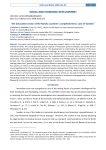
The innovative vector of the Nordic countries’ competitiveness: case of Sweden
Статья научная
Innovation and competitiveness are among key research topics in the social, economic and hu-manitarian fields. This article describes specific aspects of innovation policy in Sweden, one of the dynami-cally developing Northern European countries. This development is confirmed by the position of the coun-try in the global innovation and competitiveness rankings. It is shown that high position of Sweden arises from the successful use of its geographic location, the “welfare state” model put into practice, the effective interactions of the state, science, and business, the implementation of research policy, according to which universities and research, and educational centers, involved in technology clusters formation, play an im-portant role. The existing Arctic strategy developed in Sweden adds relevance to the research. The Arctic strategy states that “growth and competitiveness based on overcoming trade barriers, research and educa-tion system, as well as on international cooperation within the Arctic Council, the EU and the UN” will have crucial significance for the sustainable social and economic development of the state. From a practical point of view, the Swedish experience in the formation of an innovation economy, which includes northern re-gions as well, is of interest for the Russian subarctic areas. The article can be used for the educational pro-cess at universities. It is relevant for civil servants and researchers, economists and geographers involved in forecasting and territorial development of the northern regions.
Бесплатно
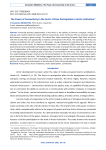
The power of connectivity in the Arctic: citizen participation in arctic institutions
Статья научная
Increasing business opportunities in the Arctic in the spheres of tourism, transport, mining, oil and gas and creative industries require efficient connectivity. Arctic territories offer an attractive place for data servers running on green energy. The subsea fiber cable connecting European High North territories with the US and Asia is an opportunity to improve connectivity in the Arctic. The opening of the Arctic sea creates preconditions for such a project. In this paper, I study existing Arctic institutions that deal with connectivity issues in the Arctic. As theoretical frameworks, I use Gaventa’s (1982) framework of power and powerlessness and stakeholder participation model. The power and powerlessness and modes of participation of stakeholders at the national and regional levels are investigated. I use secondary data, such as the EU and regional policies, statistical data on the topic of connectivity in the Arctic. The study contributes to the understanding of power structure and citizen participation in the Arctic institutions by using an example of connectivity in the Arctic. The findings suggest that Arctic institutions have very limited citizen participation opportunities due to their composition, working formats, and governance structures. Several suggestions for opening-up closed spaces to be inclusive of Arctic citizens perspectives are suggested.
Бесплатно
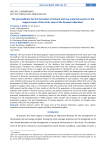
Статья научная
The new version of the state program “Social and economic development of the Arctic zone” and the draft law “On the Development of the Arctic Zone of the Russian Federation” have designated support zones as the main instrument for the development of the Arctic. Their main task, according to the specified documents, is the development of mineral and raw materials centers (MRCs) in the Arctic zone of Russia, attraction of investments, development of the Northern Sea Route and development of energy infrastructure. Therefore, the selection of promising mineral and raw materials centers in the support zones in the Russian Arctic is an urgent task. By actualization of information on the resource potential of the Arctic zone of Russia, it is possible to form a list of prospective MRCs, the development and support of which should be in the priority focus of public policy in this region. Equally important is the analysis of key risks such as financial, construction and geological risks that arise when creating and developing mineral resource centers and have a significant impact on the profitability of such projects. The paper suggests some indicators that assess the macroeconomic, social, geopolitical and innovative effects that arise in the development of MRCs and which should be used for evaluating the social and economic impacts of MRC projects in support areas. Also, it is necessary to take into account the social and economic importance of MRC projects and the impact of their results on the life of the population. As the primary approach in the selection and creation of mineral resource centers, the authors propose the use of the cluster approach. Such clusters will act as pivots in the spatial organization of the regional economy and will achieve the maximum multiplicative effect. In conclusion, based on the analysis, the authors formulated the main principles for the implementation of MRC projects, which include: the formation of a single geological exploration program, the joint development of nearby deposits, and the formation of complex socio-economic effects for the exploration areas.
Бесплатно
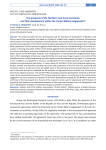
Статья научная
The article considers the main prerequisites and the directions of development of Northern and Arctic areas of the Krasnoyarsk Krai based on creation of reliable local transport and power infrastructure and formation of hi-tech and competitive territorial clusters. We examine both the current (new large mining and processing works in the Norilsk industrial region; development of Ust-Eniseysky group of oil and gas fields; gasification of the Krasnoyarsk agglomeration with the resources of bradenhead gas of Evenkia; ren-ovation of housing and public utilities of the Norilsk agglomeration; development of the Arctic and north-ern tourism and others), and earlier considered, but rejected, projects (construction of a large hydroelectric power station on the Nizhnyaya Tunguska river; development of the Porozhinsky manganese field; place-ment of the metallurgical enterprises using the Norilsk ores near Lower Angara region; construction of the meridional Yenisei railroad and others) and their impact on the development of the region. It is shown that in new conditions it is expedient to return to consideration of these projects with the use of modern tech-nologies and organizational approaches. It means, above all, formation of the local integrated regional pro-duction systems and networks providing interaction and cooperation of the fuel and raw, processing and innovative sectors. At the same time, the added value of the extracting and processing industries is local-ized in the area and will be mobilized for the purposes of high-performance technical and infrastructure base of the regional economy. The specified effect promotes economic development and leads to diversifi-cation of the monoprofile economy of the northern and Arctic regions. The provisions of the article and its suggestions can be considered as elements of the future development strategy for the Northern and Arctic territories of the Krasnoyarsk Krai. Results of the research can be used for adjustment and formation of long-term and medium-term investment programs at the state and municipal levels of management and also in development strategies of industrial, transport and power corporations.
Бесплатно
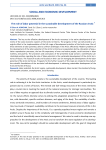
The role of labor potential in the sustainable development of the Russian Arctic
Статья научная
The key to the effective development of the Arctic resources is the active development of elements of the socio-economic systems of the Arctic territories. The progress in their use will provide a synergistic effect in the implementation of the full range of development priorities of the Arctic zone. One of these elements is labor potential, able to confront challenges in the Arctic effectively. Modern problems of the development of the labor potential of the Arctic territories are population decline, disruption of population reproduction processes, the low life expectancy of men and native people, social tensions in labor markets, and poverty. The provisions and conclusions of the presented study contain a scientifically substantiated position regarding the role of labor potential in the sustainable development of the Arctic territories of Russia. The research results are focused on their use for managing the development of the labor potential of the Arctic territories. Prospects for the further research of this topic are related to the study of the scientific foundations of the territorial self-development in achieving sustainable development of the Arctic territories of Russia.
Бесплатно
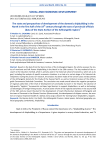
Статья научная
Based on the data from the State Archive of the Arkhangelsk Region, the article assesses the status of merchant and folk Pomor shipbuilding in the North in the 20th century. The key method of the research is the induction method, which is actively used in the historical school of economics, which set as its goal, including the analysis of specific economic situations in a state at a certain stage of its historical de-velopment. During the process of research, the analysis has been made of the certain cases and documents of the Arkhangelsk Society for the Study of the Russian North, as well as historical reviews of the Arkhangelsk Governorate Statistical Committee. The conclusion was made overall about the negative perception of regional authorities of the level of development of commodity turnover in the Empire, the absence of high-quality “logistics,” bureaucratic red tape, legal barriers to support shipbuilders, as well as technological advantages of foreign fishing vessels. A constructive reform of the regional authorities in the second half of the 19th century meant the plan for the development of road infrastructure between Arkhangelsk and the town of Povenets in the Olonets Province (Governorate), the development of skipper courses, the creation of a typical improved model of a karbas and a cargo schooner for training future shipbuilders, skippers.
Бесплатно
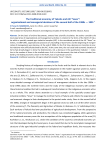
Статья научная
On the basis of archival documents, entered into scientific circulation, the author considers the local experience of organizational and management activities in relation to the farms of the North of Yaku-tia within a specially created agro-industrial complex (AIC). In the considered period of the AIC “Sever” ac-tivities, in 1989-1991, organizational processes of unbundling of state farms and the beginning of reorgani-zation of management were decisive. At the end of 1990s, for the first time, decisions on transition to mar-ket relations were officially declared by the AIC. At the same time, the real social and economic situation of farms had already begun to show the deterioration, incl. a decrease in the quantitative indicator — reduc-tion in the number of farms in the studied areas. As it is in the documents, the state of home reindeer hus-bandry, the leading economic sector in the North, was of a particular concern.
Бесплатно
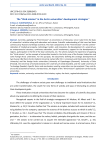
The “third mission” in the Arctic universities’ development strategies
Статья научная
Currently, applying the “third mission” at universities is of relevance, since it also forms the basis of universities' activities along with education and science. Scientific understanding of this issue had been carried out by Russian and foreign scientists. The main components of the “third mission” are the commercialization of intellectual property, technology transfer, and innovation, the development of a university as an entrepreneurial structure, continuous education, social involvement, support for the development of regions, participation in the life of the local community, etc. The article analyzes the experience of applying the “third mission” on the example of universities located in the Arctic zone of the Russian Federation and some foreign Arctic universities. For this purpose, the documents defining the strategic development of two Russian (Northern (Arctic) Federal University named after M.V. Lomonosov and Murmansk Arctic State University) and five foreign Arctic universities (University of Copenhagen (Denmark), University of Oulu (Finland), the University of Iceland (Iceland), the University of Umeå (Sweden), and the Luleå University of Technology (Sweden). Specific forms and mechanisms used by universities are also analyzed. They contribute to the assessment of nature, characteristics, the degree of the “third mission” application carried out by universities.
Бесплатно
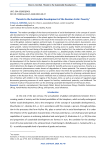
Threats to the sustainable development of the Russian Arctic: poverty
Статья научная
The modern paradigm of the theory and practice of social development is the concept of sustainable development, the emergence and spread of which was associated with the emphasis on environmental pollution and overpopulation of the planet against the background of limited natural resources. Today, sustainable development is defined as the result of the interaction of a man, the economic system, and nature at the global, national, regional, and local levels. It is expressed, to a certain extent, by economic, environmental, and social sustainability. Modern goals in the field of sustainable development are to promote green growth, rational environmental management, ensuring access to quality health and education services, and improving the well-being of the population. The latter implies, first, the reduction of multidimensional poverty, the numerous groups of social localization, i.e., disabled people, families with children, single-parent families, and ethnic minorities. The aim of the study is to assess the level and extent of poverty and its social localization in the framework of achieving sustainable development of the regions of the Russian Arctic. The relevance of the study is determined by the fact that the rates and proportions of sustainable development of the Russian Arctic depend on the qualitative state of human potential (carried by the population). The qualitative state of human potential depends on the level of well-being of the population, which determines the degree of satisfaction of needs for benefits and access to social services. Poverty as a socio-economic phenomenon creates threats of degradation of human potential. The research hypothesis is based on the understanding that poverty is a systemic factor that limits the possibilities of a high-quality reproduction of human potential and, accordingly, promising opportunities for achieving sustainable development in the Russian Arctic. The research methods were a statistical analysis of the socio-economic situation of families with children in the regions of the Russian Arctic, as well as an analysis of regulatory legal documents governing measures of social support for families, motherhood, paternity, and childhood. The research results are focused on their use for achieving sustainable development of the Russian Arctic.
Бесплатно
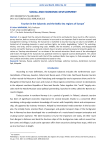
Tourism in the Subarctic and the Baltic Sea regions of Europe
Статья научная
It is argued that the cultural dimensions of the Arctic and Subarctic have much to offer contemporary tourism, both as sources of new contents in tours and as an important field in tourism research and management training. In Norway, the Euroarctic is marketed to tourists focusing on nature and wildlife. A limited set of branding elements is used: northern lights, ice hotels, dogsledding, “safaris” for watching: whales, rare birds, and for catching king crabs. Wildlife, like the weather, is unreliable, and disappointed tourists are bad for business, so cultural contents have in practice proved necessary to bring into guide narratives as “backup entertainment” on no-shows of the natural attraction. Much more of the ethnological and historic heritage of the Euroarctic has potential interest to regional tourism development. This article compares tourism in the Euroarctic with that of the southeast Baltic Sea region, to find examples of what this could be and makes some recommendations based on that.
Бесплатно
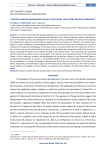
Tourism industry development issues in the Arctic zone of the Russian Federation
Статья научная
The article summarizes the existing approaches to assessing the level of tourism at the local level. It allowed forming a system of key indicators and indicators of the tourism industry activity in the development of the hotel business; the development of tourism business; profitability of tourism and hospitality; the popularity of regional tourism products. Based on the formed system of indicators, the author's technique of a point estimation of development activity for the tourist branch was developed. As a result of testing of the proposed methodology in the Russian Arctic, we could reveal that the weaknesses of the Arctic territories was the low popularity of the local tourist products and low growth yield of the tourism industry, especially among the areas wholly included in the Russian Arctic. The conclusions are consistent with the results of an expert survey of participants of the tourism and recreational cluster of the Murmansk Oblast. A set of measures aimed at the development of the tourism industry of the Murmansk Oblast is proposed: the recognition of tourism as a subsidized industry at the level of the Oblast and its municipalities; consolidation in strategic and program documents of the territory on the formation of the local tourist brand, advertising, and information support of the local tourist product promotion on the internal and external markets; a campaign on the promotion of a positive tourist image of the Murmansk Oblast in mass media.
Бесплатно

